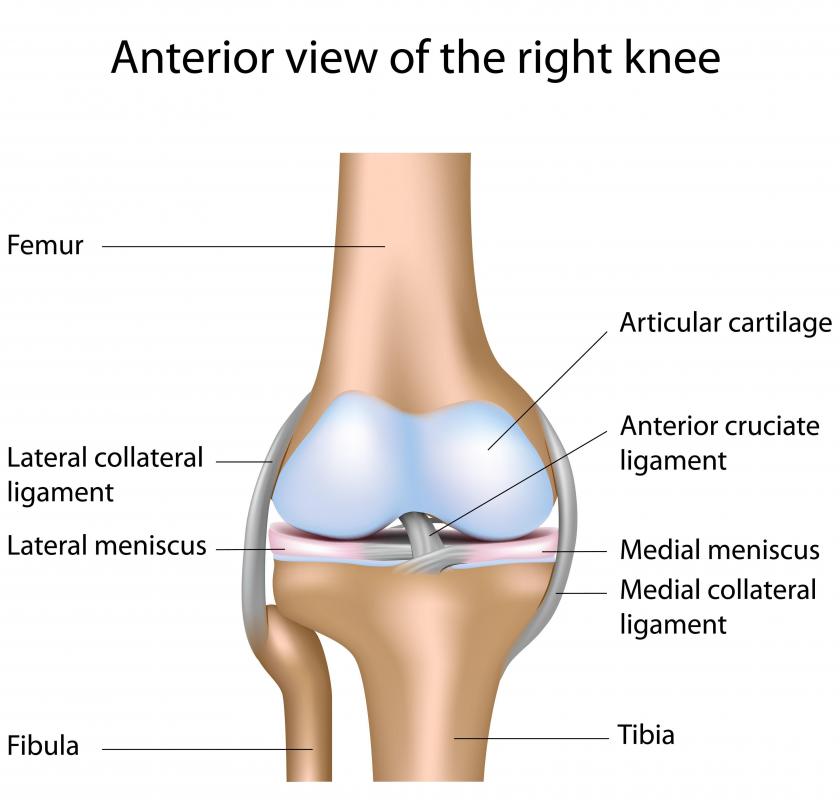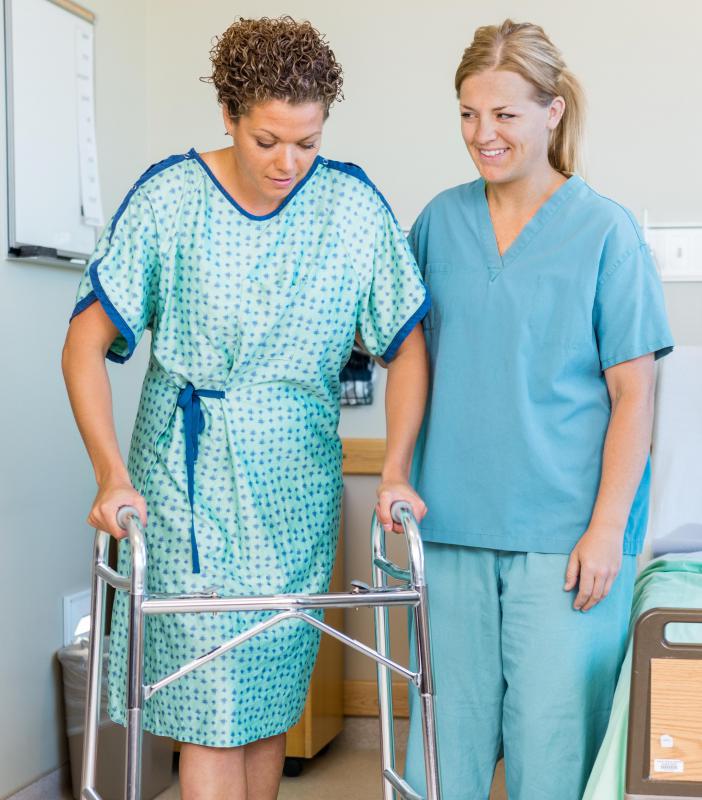At WiseGEEK, we're committed to delivering accurate, trustworthy information. Our expert-authored content is rigorously fact-checked and sourced from credible authorities. Discover how we uphold the highest standards in providing you with reliable knowledge.
What Precautions do I Need to Take After Knee Replacement Surgery?
A doctor or caregiver will give you specific instructions for precautions you must take after knee replacement surgery, and it is important to follow these guidelines carefully even if you feel your knee is healing quickly. Injuring the joint after knee replacement surgery is quite easy to do, and it can lead to major setbacks in the healing process. Be sure to avoid practices that may put undue stress on the knee, such as crossing your legs or walking down stairs. You will likely feel significant pain after knee replacement surgery, and it is important to carefully adhere to a doctor's instructions for painkilling medications and anti-inflammatory medications.
You will more than likely need to use a walker or even a wheelchair in the weeks and months after knee replacement surgery. Be sure to become familiar with the function of these recovery tools, and do not stop using them before the knee has had sufficient time to heal and become used to bearing weight again. A new knee joint will not be ready to bear much of the body's weight in the weeks and months following surgery, and it is important not to rush the process. Avoid exercising the lower body, and do not allow the knee to move in ways a physical therapist or physician has not approved. It is best to immobilize the knee joint and allow swelling to subside, muscles and ligaments to heal, and the joint to begin to function properly.

If you are taking blood thinning medications, be sure to read the precautions printed on the bottle. These medications are meant to prevent blood clots after knee replacement surgery, but they will also allow bleeding to occur more easily in other parts of the body. Be careful when shaving and brushing your teeth to avoid bleeding in the gums or on the face, as well as other parts of the body. These injuries may be difficult to treat, since the blood will not clot as easily as it normally would. Take precautions with other medications as well; do not operate heavy machinery or drive a car while on sedating or painkilling medications.

Keep in mind that even after you are able to put weight on your new knee, you may not have the best balance. It is important to continue to use walking aids after knee replacement surgery, even after you are able to bear weight on the knee. Spending so much time off your feet is likely to affect your balance as well as the strength and durability of your muscles. Try not to stand for too long without resting, and use crutches or a walker for several weeks after you are able to put weight on the knee.
AS FEATURED ON:
AS FEATURED ON:














Discuss this Article
Post your comments